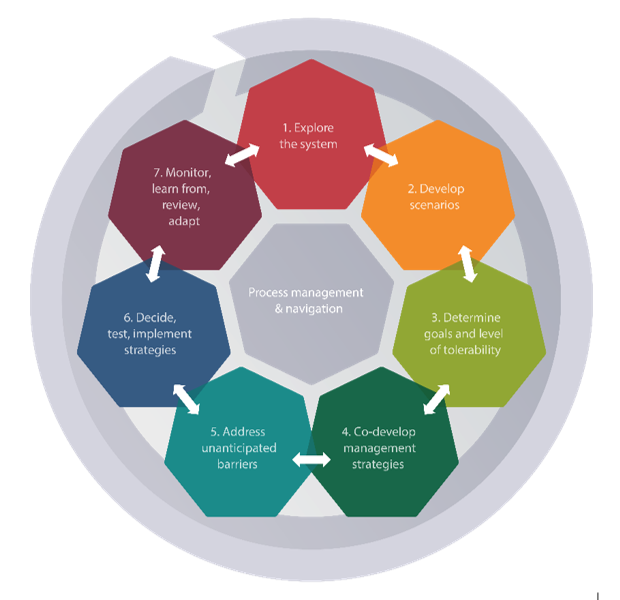Complex systemic risks are fundamentally different from conventional risks, and traditional risk management practices are not sufficient for dealing with them. Elaborating on previous IRGC work, IRGC’s guidelines for the governance of systemic risks address the question of how to deal with systemic risks in the context of transitions, i.e. in situations that require adaptation to new context conditions or transformation. Examples include desertification processes, fisheries depletion, transformation of energy systems or new transportation systems and even mobility patterns.
The guidelines have the following objectives:
- Provide guidance to organisations in their initiatives to understanding complex system dynamics and reflecting upon their own position within these dynamics.
- Help actors in a system to either prevent the shift of the system within which the organisation operates to an undesirable regime, or trigger and facilitate the transition of the respective system to a preferable regime, considering changes in underlying context conditions or proximity to a tipping point that may trigger a regime shift.
The guidelines comprise seven interlinked steps to:
- Step 1 Explore the system in which the organisation operates; define the boundaries of the system and the organisation’s position in a dynamic environment.
- Step 2 Develop scenarios, considering ongoing and potential future transitions.
- Step 3 Determine goals and the level of tolerability for risk and uncertainty.
- Step 4 Co-develop management strategies to deal with each scenario and the systemic risks that affect or may affect the organisation, and to navigate the transition.
- Step 5 Address unanticipated barriers and sudden critical shifts that may come up during the process.
- Step 6 Decide, test and implement strategies.
- Step 7 Monitor, learn from, review and adapt.


In the face of many unknowns, increasing the overall resilience of an organisation can be a way to prepare for and better deal with the shocks and stresses arising from systemic risks. In line with mainstream recommendations for resilience building, the IRGC suggests three main strategic approaches for governing systemic risks in the context of transitions:
- Support and strengthen the ability of a system to self-organise and self-control
- Engage in pro-active intervention strategies:
– Prevention
– Mitigation
– Adaptation
– Transformation - Prepare for disruptions, accidents and crises
These strategies can be combined or implemented successively if proximity to a regime shift seems to increase.
There must be iteration between the steps, orchestrated by a facilitator. At all stages, communication, openness and transparency are key to ensure smooth proceedings. Collaboration, learning together and experimentation are essential for improving an organisation’s capacity to deal with systemic risks. This can be organised by a ‘navigator’, who also has the task of organising some form of ownership for systemic risks.
